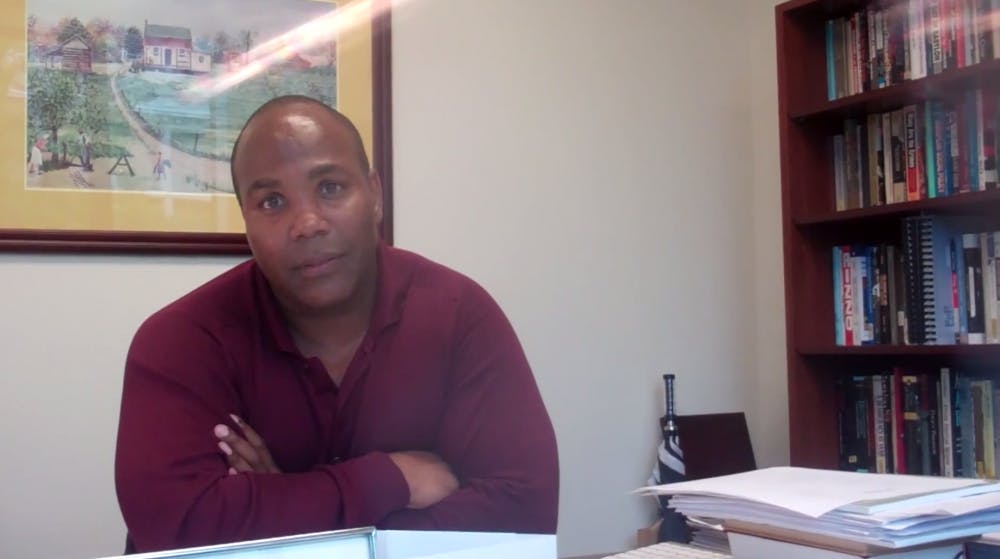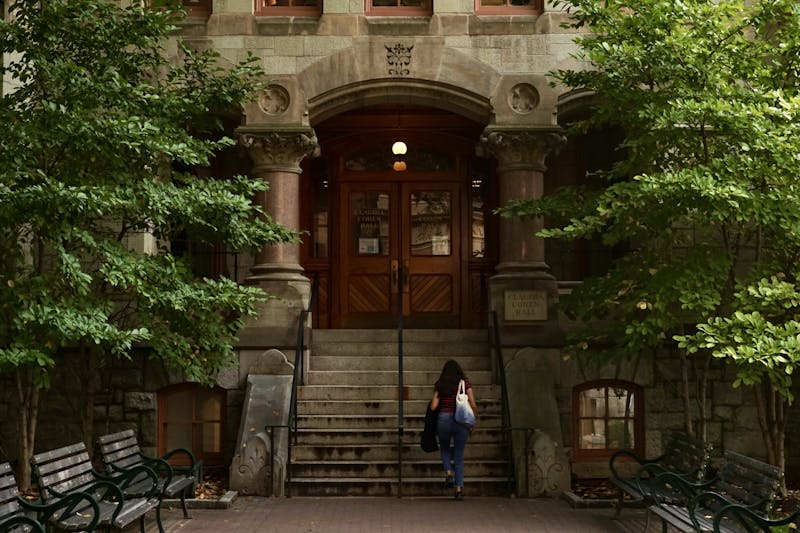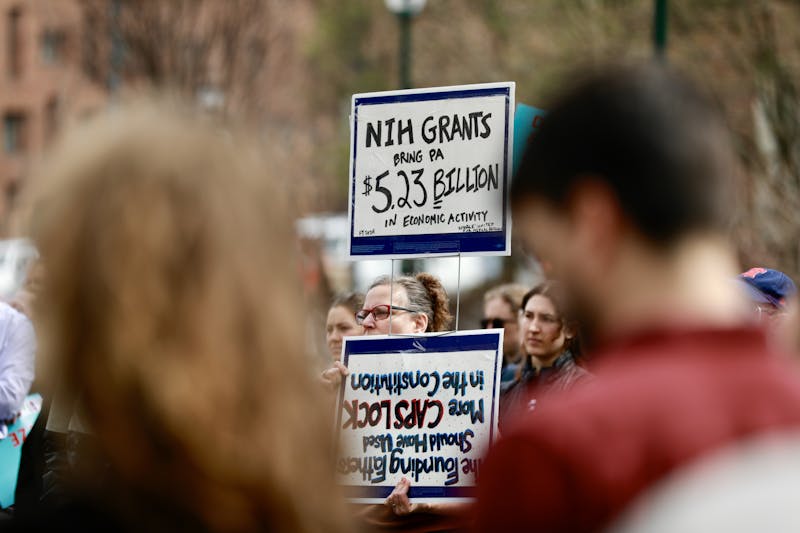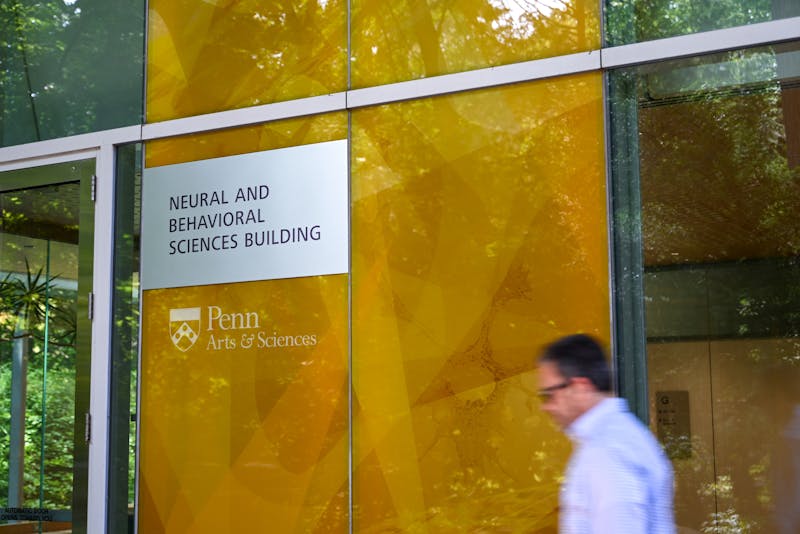
Former narcotics cop Clemmie Harris sees Philadelphia’s upcoming decriminalization of marijuana as an important step toward reevaluating the role of marijuana in society.
Harris, who left the drug task force in New York to pursue drug reform policy at the state level as a senior aide to Governor David Paterson, now teaches students about politics, race and history as a post-doctoral fellow in the Center for Africana Studies .
The Daily Pennsylvanian sat down with Harris to talk about Philadelphia’s recent move to decriminalize marijuana and the racial issues associated with it — in Philadelphia, it has been widely reported that 83 percent of the arrests made for marijuana possession were of blacks and Latinos .
The Daily Pennsylvanian: What implication does Philadelphia’s decriminalization of marijuana have for drug policy in general?
Clemmie Harris: It has significant implications on drug policy because at the end of the day, drug policy really, at that particular level, serves what I call the types of quality-of-life issues that plague communities throughout urban and suburban America.
Small quantities of marijuana had historically been used as a way [to stop] a suspect for perceived actions or criminality of a greater nature, and [in] many of those cases, given the types of communities and the socioeconomic background of those communities ... the targets of such enforcement were often African American, Latino or other men of color who were from other struggling communities, largely throughout the nation.
DP: How do we explain the higher numbers of blacks and Latinos getting arrested?
CH: Part of that has to do with a type of profile of a culture of black and brown individuals, ... there is a preconceived notion that in black and brown communities you will find high consumption of marijuana. Certainly, some of this is triggered by images within pop culture — there are any number of hip hop videos that sensationalize the use of marijuana — but there is also a broader cultural ethos that perceives use of marijuana not only [as] non-threatening, but in many cases they perceive it to be therapeutic.
DP: What is this image of blacks and Latinos?
CH: The prototypical image certainly is one of the young African American, Latino, urban population from poor communities that are in fact not only engaged in consumption of marijuana but may in fact be lower level dealers as well. Now there is an important distinction here, that overwhelmingly the individuals are not the producers, in many cases ... the producers of marijuana were not black, they were not Latino — they were white.
DP: When did marijuana become a public safety issue?
CH: It started to be seen as a public safety issue during the late 19th century when members of Congress were beginning to talk about the effects of drug consumption on mainstream Americans.
[They thought] Mexicans were responsible for the marijuana problem, members of the Asian community ... were responsible for the heroin problem and African-American consumption of cocaine would make them highly lascivious, they would be more prone to raping white women and any man seeking to protect his home would find them impervious to a .38 caliber bullet. All of this racial imagery happening in the 19th century ultimately provided what was a real soft shoe landing for the broader issue, which was the fact that significant amounts of middle white America were engaging in narcotic consumption.
So the boogeyman, if it were, was not being placed on the most obvious consumers, it was being transferred to racialized groups that was deemed responsible for the deterioration of American society.
DP: How much discretion does a police officer have in making an arrest for possession of marijuana?
CH: Police have a significant amount of discretion, but the question here is really based off of what is the legal foundation of an arrest.
Legal foundations can be based off of as little as reasonable suspicion. Reasonable suspicion can be triggered by the smell of marijuana, [it can] be triggered by a marijuana cigarette. If an officer can articulate what he or she reasonably believed to have been a form of drug contraband, then he or she has the power to effectuate an arrest.
If you stop someone with a low level of marijuana, you may decide to use your discretion and give them a break, but that break is not free. That break may mean if that officer needs info on something else that’s going on, if a break is extended, it doesn’t mean you’re free and clear — it means that you in a very strange way, end up working for the officer in terms of providing information.
DP: When you were an officer, did you ever encounter instances where you saw these stereotypes coming into play?
CH: The vast majority of the police officers I’ve worked with are very good people. They are very hardworking [and] they are people who are extremely fair. This is not necessarily a cultural issue with regards to individuals. This is structural.
Another thing I would say is, rarely did I come across someone who was a prototypical racist. We operate within the culture of colorblindness. Colorblindness is the refusal to engage in obvious forms of racial practices while allowing the structural disparities, the disparities that have come out of structural racism, to continue to move forward. As a society we have sort of adopted a colorblind notion.
DP: Is American then moving away from viewing marijuana as a public safety issue?
CH: I think there’s a movement toward the middle from the [conservatives] on the issue of marijuana and what that means is that there’s now more of an opportunity to have a discussion on the role of marijuana in American society. That does not necessarily situate marijuana as a safety issue, and I think that has very important implications on our society in general because of the ways in which marijuana had been so heavily racialized.
I do think the broader move to decriminalize these low degrees of marijuana forces society to think about what are more substantive ways of addressing this issue.
Editor’s Note: This interview has been condensed and edited for clarity.
The Daily Pennsylvanian is an independent, student-run newspaper. Please consider making a donation to support the coverage that shapes the University. Your generosity ensures a future of strong journalism at Penn.
DonatePlease note All comments are eligible for publication in The Daily Pennsylvanian.







